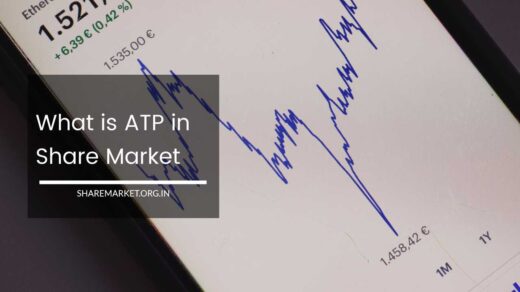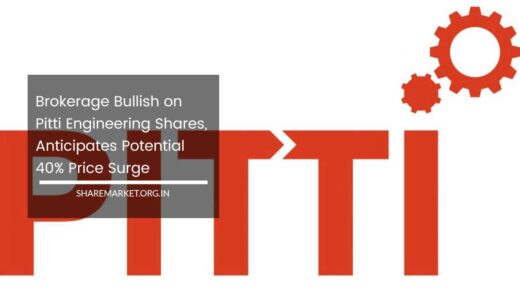What is MTM in Share Market

What is MTM in Share Market
MTM or Mark-to-market is an accounting method that involves valuing securities, assets, or liabilities based on their current market prices.
This approach provides a realistic and up-to-date appraisal of an institution’s financial situation. Here are some key points to expand on the concept of mark-to-market:
1. Valuation of Securities
Mark-to-market is primarily used for valuing securities, such as stocks, bonds, derivatives, and other financial instruments.
Instead of relying on historical cost or book value, which may not reflect the current market conditions, mark-to-market adjusts the value of these securities based on their prevailing market prices.
2. Fair Value Assessment
The main objective of mark-to-market accounting is to assess the fair value of assets and liabilities.
Fair value represents the price at which an asset could be bought or sold in an open market transaction between willing parties.
By utilizing market prices, mark-to-market provides a more accurate representation of the true value of these financial instruments.
3. Dynamic and Time-Sensitive
Mark-to-market accounting recognizes that the market value of securities can fluctuate over time.
It takes into account changes in supply and demand, market conditions, investor sentiment, and other factors that influence the price of financial instruments.
This dynamic approach ensures that the valuation reflects the most recent market conditions.
4. Transparency and Realistic Appraisal
Mark-to-market accounting promotes transparency in financial reporting by reflecting the actual market value of securities.
It provides a more realistic appraisal of an institution’s financial position, enabling stakeholders, such as investors, lenders, and regulators, to make informed decisions based on current market conditions.
5. Implications for Profits and Losses
The mark-to-market valuation has implications for an institution’s profits or losses. If the market value of a security has increased since its acquisition, it would result in unrealized gains.
Conversely, if the market value has declined, it would lead to unrealized losses. These gains or losses are recognized in the financial statements, providing a clear picture of the institution’s overall financial performance.
6. Risk Management and Capital Adequacy
Mark-to-market accounting plays a crucial role in risk management and assessing capital adequacy.
By accurately valuing securities, financial institutions can monitor their exposure to market fluctuations and manage their risk positions effectively.
Additionally, regulators often require institutions to mark-to-market certain assets for capital adequacy calculations.
Overall, mark-to-market accounting is a valuable tool for financial institutions to assess the fair value of their securities and obtain a realistic appraisal of their financial condition.
It enhances transparency, facilitates risk management, and enables stakeholders to make informed decisions based on the most up-to-date market information.
How to Calculate Mark-to-market?
To calculate mark-to-market, the following steps are typically involved:
1. Determine the Closing Prices
At the end of each trading day, gather the closing prices of the securities or financial instruments in question. These prices represent the market value at the close of the trading session.
2. Compare with Previous Day’s Positions
Compare the closing prices with the positions held from the previous day. This applies to both open positions that were carried forward and new positions opened during the day.
3. Calculate Unrealized Gains or Losses
Determine the difference between the previous day’s positions and the current market value of the securities. If the market value has increased, it results in unrealized gains. Conversely, if the market value has decreased, it leads to unrealized losses.
4. Aggregate the Gains and Losses
Summarize the unrealized gains and losses for each security or financial instrument held. This can be done individually for each position or in aggregate for the overall portfolio.
5. Reflect in Financial Statements
Depending on accounting rules and regulations, the unrealized gains or losses are typically reflected in the financial statements.
These gains or losses may contribute to the overall profitability of the institution or impact its capital adequacy.
It’s important to note that mark-to-market calculations assume that all open positions and transactions are closed at the end of each trading day, while new positions are opened the following day.
This means that the calculation is based on the assumption of closing and opening positions at the prevailing market prices.
The process is repeated daily to provide an up-to-date valuation of the securities or financial instruments based on their market values.
It’s worth mentioning that specific accounting standards and regulations may provide further guidelines on how to calculate mark-to-market, and institutions may have their own internal methodologies to ensure accuracy and compliance with relevant requirements.
What are MTM and P&L?
MTM stands for Mark-to-Market, while P&L stands for Profit & Loss. These terms are commonly used in the financial industry, particularly in trading and investment activities, to assess the financial performance of positions or portfolios.
Mark-to-Market (MTM) refers to the process of valuing a position or portfolio based on its current market value. It involves revaluing the assets or liabilities to their prevailing market prices.
By marking positions to market, the objective is to obtain a realistic appraisal of their current value. MTM calculations are typically performed on a regular basis, such as daily, to provide up-to-date valuations.
Profit & Loss (P&L) reflects the realized and unrealized profit or loss associated with a particular position or portfolio.
Realized profit or loss refers to gains or losses that have been actually realized through the sale or closure of a position.
Unrealized profit or loss refers to gains or losses that have occurred but have not been realized because the position is still open.
In the context of MTM and P&L, the P&L is calculated based on the difference between the current market value of the position and its initial cost or purchase price.
If the market value is higher than the initial cost, it results in an unrealized or realized profit. Conversely, if the market value is lower, it leads to an unrealized or realized loss.
P&L is an important metric as it provides insights into the financial performance of a position or portfolio over a specific period.
It helps traders and investors assess the profitability of their investments and make informed decisions regarding buying, selling, or holding positions.
MTM and P&L are closely related concepts, with MTM providing the updated market values for positions, and P&L reflecting the associated profits or losses.
By regularly marking positions to market and monitoring the P&L, market participants can gauge the financial health of their investments and adjust their strategies accordingly.
Is MTM a Loss?
Under mark-to-market accounting, if the current market value of a financial instrument is lower than its original purchase price or carrying value, it would be recorded as a loss.
However, it’s important to note that this loss is an accounting entry and does not necessarily mean an actual realized loss.
Mark-to-market accounting aims to provide a realistic and transparent valuation of assets or positions based on their current market value.
The purpose is to reflect the potential gains or losses that would arise if the positions were closed or liquidated at that moment.
When a loss is registered in your portfolio under mark-to-market accounting, it means that the current market value of the assets is lower than their carrying value on your books.
This loss is a representation of the decrease in the value of the assets according to the prevailing market conditions.
It’s crucial to understand that mark-to-market losses are unrealized losses because the positions are still open. They only become realized losses if the positions are closed or sold at the lower market value.
Until that point, the losses are reflective of the current market value and provide an assessment of the potential loss if the positions were to be liquidated.
Mark-to-market losses can fluctuate with market conditions, and it’s important to consider them in the context of the broader investment strategy and time horizon. Investors and traders should assess their risk tolerance and investment goals when evaluating mark-to-market losses.
It’s essential to monitor market trends and make informed decisions based on a comprehensive analysis of the portfolio’s performance and market dynamics.
Is MTM Profitable?
Mark-to-Market (MTM) accounting does not inherently determine whether a position is profitable or not.
It is a method of valuing assets or positions based on their current market value, which allows for the calculation of daily profits or losses arising from changes in market value.
The profitability of an MTM position depends on the specific circumstances of the investment and the subsequent market movements.
If the market value of a position increases compared to its original purchase price or carrying value, it would result in a profit when marked-to-market. Conversely, if the market value decreases, it would result in a loss.
MTM accounting enables investors and traders to track the daily profits or losses of their positions based on the prevailing market conditions.
It provides a transparent and up-to-date assessment of the financial performance of these positions.
It’s important to note that MTM profits and losses are unrealized until the positions are closed or liquidated.
Unrealized profits or losses represent the potential gains or losses that would be realized if the positions were to be closed at the current market value.
Ultimately, the profitability of an investment or trading strategy depends on various factors such as the initial purchase price, transaction costs, holding period, and subsequent market movements. MTM accounting allows for a more accurate reflection of the current value of positions and provides a basis for assessing their profitability, but it does not guarantee profitability on its own.
Investors and traders should consider their investment goals, risk tolerance, and market conditions when evaluating the profitability of MTM positions.
Final Words
MTM or Mark-to-Market accounting offers several advantages in managing trading risks. By settling profits and losses on a daily basis, MTM helps reduce the risk of erasing previous gains due to subsequent losses.
It provides a clearer picture of your financial standing and allows for prompt decision-making regarding position closure when your investment goals are met. This active management of profits can contribute to effective risk management.
The daily settlement of profits and losses under MTM enables you to stay informed about your current position, making it easier to assess your risk exposure.
By realizing profits daily, you have a better understanding of your overall financial performance. This knowledge empowers you to make timely decisions, such as closing positions or adjusting your strategy when necessary.
Furthermore, MTM helps in managing your risk profile. By monitoring daily profits and losses, you can establish thresholds for acceptable losses.
If you incur certain losses, you can determine an exit point to limit further losses and protect your capital. This proactive risk management approach helps you maintain control over your investments and minimize potential downside.
By using MTM, you can avoid accumulating significant losses over time, as losses are recognized promptly. This allows you to adapt your trading strategies and take necessary corrective actions to mitigate risks.
It enhances your ability to respond to changing market conditions and adjust your positions accordingly.
Overall, MTM provides a valuable tool for risk management in trading. By settling profits and losses daily, understanding your financial standing, and actively managing risk, you can make more informed decisions and safeguard your investment capital.

















